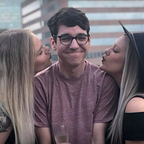The TERriffic Visioning Sprint
Last Friday we completed a Visioning exercise which responded to initial design ideas derived from the affinity diagramming process. These ideas were developed on our first Visioning day into rough storyboards to develop the concepts more concretely. The storyboards, once complete, were “mapped” within a explanatory framework characterizing the concepts as “Tactical” “Evolutionary” and “Revolutionary” (T, E, and R, respectively.) This framework (shown as a spectrum) represents the degree to which the proposed solution represents a “progressive” change or shift from existing software architecture and logistics paradigms.
This week we completed two additional visioning exercises. The first was a round robin formulation of design ideas after brainstorming a running list of “stakeholders,” “needs / pain points,” and “technologies.” These lists represented a breadth of possibilities which were then combined into a range of provocative (and sometimes silly) design ideas.
The lists themselves are quite useful in illustrating the range of possibilities available to explore. An option from each list was selected and together the combined options became the jumping off point for the design. The ideas were written on large post its and iterated on through a round-robin with all our team members. At the end of the round robin we shared the idea iterations with the team.
The second exercise began with listing principles and assumptions which we consider to be inherent within NASA’s core work processes, vision, and institutional structure. We listed these core principles on post its and grouped them into categories. The categories were voted on and one with the highest votes was about questioning whether “an engineer knows better than a tech.” We then reversed the assumption about “engineers knowing best” in an improv storytelling exercise. The exercise led to surprising and provocative insights into the working relationship of engineers and technicians, and reified which aspects of that relationship were undeniable or unquestionable. We realized that technician safety is an uncompromising issue at Kennedy (and other NASA centers), and that receiving feedback from technicians in advance of executing a work order is an often-overlooked activity which could potentially avoid miscommunications and errors in the work authorization process generally.
Later this week we will be revisiting the core assumptions and principles developed in our brainstorming session, and using them as jumping-off points for additional brainstorming activities. Our plan for future work sessions is to analyze technology precedents relevant to initial design concepts, and the development of user personas to better identify the target user for our design solution.
Until Next Week!
Team C-137
